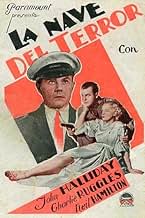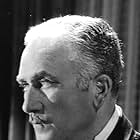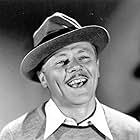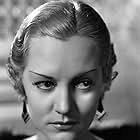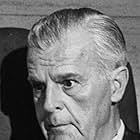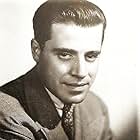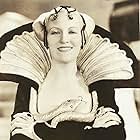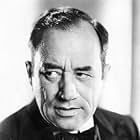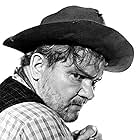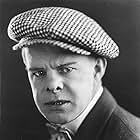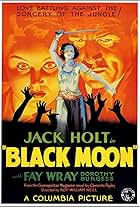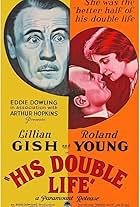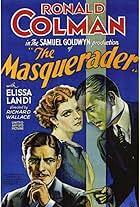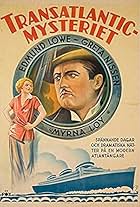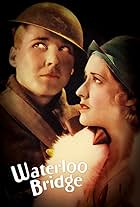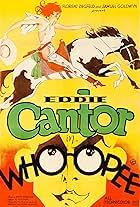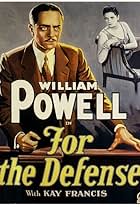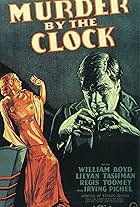An ocean liner is found at sea with everyone on board dead. An investigation is begun to find out what happened.An ocean liner is found at sea with everyone on board dead. An investigation is begun to find out what happened.An ocean liner is found at sea with everyone on board dead. An investigation is begun to find out what happened.
Photos
Charles Ruggles
- Blackie Witherspoon
- (as Charlie Ruggles)
Thomas E. Jackson
- Capt. Derick Alison
- (as Thomas Jackson)
- Director
- Writers
- All cast & crew
- Production, box office & more at IMDbPro
Storyline
Did you know
- TriviaOne of over 700 Paramount Productions, filmed between 1929 and 1949, which were sold to MCA/Universal in 1958 for television distribution, and have been owned and controlled by Universal ever since.
Featured review
I liked "Terror Abroad" a lot. This is one of the best thrillers I've seen from that time period. It was so unlike most of the crime movies of that time in which there was a murder, or even multiple murders, as those were usually crime dramas. This was not a crime drama. This was a crime thriller, bordering on horror.
One of the main reasons I liked "Terror Abroad" is that the antagonist in this movie was a bona fide killer. He wasn't someone who threatened to kill or someone who went through great plans to kill, he was someone who simply killed anyone, and everyone who got in his way.
Maximilian Kreig (John Halliday, who looked a lot like Paul Lukas) was the owner of a yacht and he was sailing in the Pacific Ocean on his way to the island of Samoa with a total of around 20 people counting guests and crew. When his communications officer or communications person received a telegram stating that Maximillian was to be arrested, Max killed his communications guy then destroyed the communications equipment so that no message could get in or out. From there he went into self preservation mode, which meant he had to eliminate any, and everyone who would suspect him of being a killer and/or suspect him of being in trouble with the law--which leads me to a question.
Why is it back then that people were so "brave" that they'd confront someone they believe is a killer? The situation usually goes down like this:
Protagonist or innocent person finds evidence that bad guy is the killer. Bad guy doesn't know innocent person has found evidence. Innocent person confronts bad guy saying something like, "I know you're the killer!" or throws all kinds of aspersions. Now bad guy has to kill innocent person to keep them quiet.
A couple of Maximillian's murders were like that, but he piled up the bodies in a myriad ways. He was responsible for the death of no less than a dozen people. Most he killed with his own hands. Others he put in a situation which would result in death. One he manipulated into killing another and then he manipulated the same person to commit suicide. At the rate Maximillian was going he was creating a ghost ship.
Of note in the movie was Charles Ruggles, the comic relief. I felt like the movie was so heavy and dark for 1933 that they added Charles Ruggles to insert some levity. Also in the movie were Shirley Grey, Neil Hamilton, Jack La Rue, and Leila Bennett, the Zasu Pitts clone.
Free on Internet Archive.
One of the main reasons I liked "Terror Abroad" is that the antagonist in this movie was a bona fide killer. He wasn't someone who threatened to kill or someone who went through great plans to kill, he was someone who simply killed anyone, and everyone who got in his way.
Maximilian Kreig (John Halliday, who looked a lot like Paul Lukas) was the owner of a yacht and he was sailing in the Pacific Ocean on his way to the island of Samoa with a total of around 20 people counting guests and crew. When his communications officer or communications person received a telegram stating that Maximillian was to be arrested, Max killed his communications guy then destroyed the communications equipment so that no message could get in or out. From there he went into self preservation mode, which meant he had to eliminate any, and everyone who would suspect him of being a killer and/or suspect him of being in trouble with the law--which leads me to a question.
Why is it back then that people were so "brave" that they'd confront someone they believe is a killer? The situation usually goes down like this:
Protagonist or innocent person finds evidence that bad guy is the killer. Bad guy doesn't know innocent person has found evidence. Innocent person confronts bad guy saying something like, "I know you're the killer!" or throws all kinds of aspersions. Now bad guy has to kill innocent person to keep them quiet.
A couple of Maximillian's murders were like that, but he piled up the bodies in a myriad ways. He was responsible for the death of no less than a dozen people. Most he killed with his own hands. Others he put in a situation which would result in death. One he manipulated into killing another and then he manipulated the same person to commit suicide. At the rate Maximillian was going he was creating a ghost ship.
Of note in the movie was Charles Ruggles, the comic relief. I felt like the movie was so heavy and dark for 1933 that they added Charles Ruggles to insert some levity. Also in the movie were Shirley Grey, Neil Hamilton, Jack La Rue, and Leila Bennett, the Zasu Pitts clone.
Free on Internet Archive.
- view_and_review
- Jan 21, 2024
- Permalink
Details
- Runtime1 hour 9 minutes
- Color
- Aspect ratio
- 1.37 : 1
Contribute to this page
Suggest an edit or add missing content


